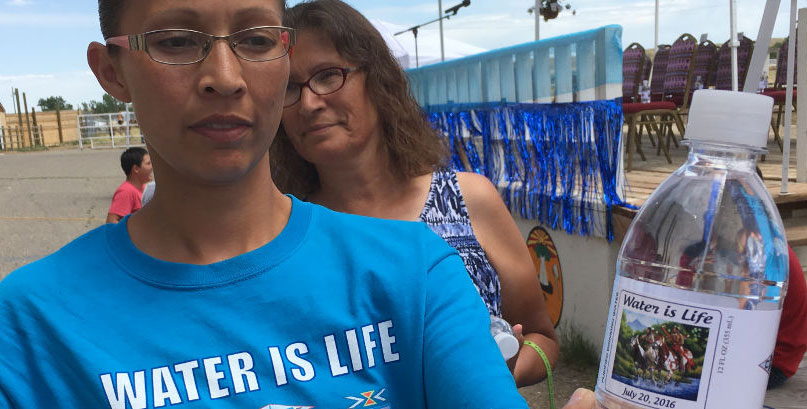
Did you know that Truthout is a nonprofit and independently funded by readers like you? If you value what we do, please support our work with a donation.
Crow Reservation, Montana — Cutting south through the western border of Crow Nation’s vast reservation the history is as dense as the land is sparse.
There are no billboards, stoplights, gas stations or cell service. “But there’s a lot out there,” says Emery Three Irons, a Crow member, driving through an early spring snow.
There’s the lone cottonwood stump along Pryor Road where the tribe would stop and picnic when the stump was a tree and the car a horse. Just beyond there’s the infamous Battle of Pryor Creek site — an “annihilation attempt,” Three Irons says — where, in about 1860, thousands of Sioux, Cheyenne and Arapahos waged war against the Crow. They were scared off by the dust clouds elk and buffalo kicked up in the distance, mistakenly thinking it was reinforcements for the far-outnumbered Crow. There’s Castle Rocks, off to the east, where members still go to fast, seeking a guiding vision.
 Emery Three Irons at the Bighorn River.Travel farther and there’s the modest log home of Chief Plenty Coups, Crow Nation’s last traditional tribal chief, who chose this place as a farmstead after having a vision high in the Crazy Mountains, 150 miles away, of an old man by a spring. “And he lived there until he was an old man,” Three Irons says.
Emery Three Irons at the Bighorn River.Travel farther and there’s the modest log home of Chief Plenty Coups, Crow Nation’s last traditional tribal chief, who chose this place as a farmstead after having a vision high in the Crazy Mountains, 150 miles away, of an old man by a spring. “And he lived there until he was an old man,” Three Irons says.
Chief Plenty Coups, which roughly translates to “many achievements,” died in 1932 at age 84. Plenty Coups Spring runs just north of the house. The water is sacred, often visited, and used at traditional sun dances for prayer and for drinking after days of dance and fasting.
It’s also contaminated with feces. And the spring is just one of dozens of water pollution problems across the expansive 2.3 million acre reservation.
For Native American tribes, water more than sustains — it is a blessed, living thing to be revered and protected. It forms the center of creation stories and provides spiritual rejuvenation after fasting and dance. Across this nation’s original cultures, water is the cultural touchstone. Yet tribes across the United States face water pollution problems that make their members sick, taint their traditions and epitomize the weight of modernity squeezing spiritual connections to a breaking point.
“It is a big piece of the puzzle,” says Montana’s Democratic Sen. Jon Tester during a visit to Crow Agency earlier this summer. “If water has poor quality, it creates health problems. And health is a big part of quality of life.”
Here on the Crow reservation, pollution shows up in the form of heavy metals, nitrates, fecal coliform and E. coli, the latter three most likely products of agriculture upstream. Scientists are still figuring out the sources but the effects are pretty clear: Well water contaminated with pollutants exacerbates health problems such as diabetes.
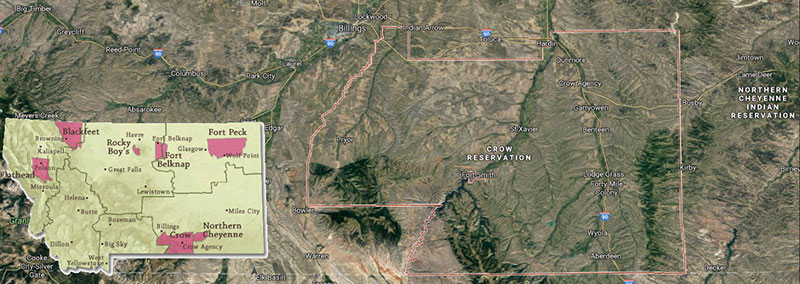 (Graphic: Environmental Health News)
(Graphic: Environmental Health News)
A solution sits on the horizon: A $246 million municipal water system that would lay 750 miles of pipe across the reservation and take homes off tainted well water. The agreement is the result of 35 years of discord and deadlock among state, federal and tribal governments over water rights. The new compact, touted by all sides as historic, became fully enforceable in June.
That compact will improve tribal and economic health. In the West, water is money: In addition to the drinking water system, the tribe also gets funding for an irrigation system and gains exclusive hydropower rights from a local dam. But the settlement doesn’t clean the waterways.
Across the country, Native Americans are in a continuous struggle for clean water, land and food — rights guaranteed to them under treaties — while straining against an increasingly consumptive and growing society.
“We need to ask why is there this constant onus on tribes to basically fight for treaty rights?” says Emma Norman, chair of the science department and Native environmental science program at Northwest Indian College in Washington state.
But when it comes to water, it’s more than just treaty rights for Native Americans. It’s basic environmental justice.
Tribal families in East Glacier, Montana, on the Blackfeet Indian Reservation 400 miles northwest of the Crow Reservation, spent 18 years living under a boil water order — from 1994 until 2012, when a $22 million treatment plant came online.
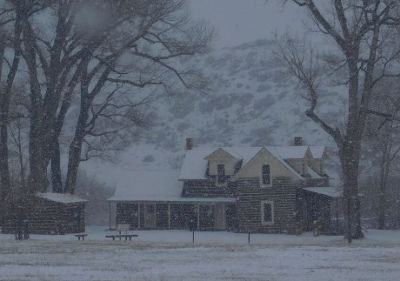 Chief Plenty Coups’ homestead.Counties with Indian reservations in them have some of the highest percentages of households without indoor plumbing in the nation, according to U.S. Census data. Fourteen percent of the homes in Oglala Lakota County, South Dakota — home of the Pine Ridge Indian Reservation — lack complete plumbing. In Apache County, Arizona — Navajo Nation — 17 percent of households lack full plumbing. Alaska is even higher: In the sparsely populated Bethel Census area, about 35 percent of all households lack plumbing, the highest percentage in the country.
Chief Plenty Coups’ homestead.Counties with Indian reservations in them have some of the highest percentages of households without indoor plumbing in the nation, according to U.S. Census data. Fourteen percent of the homes in Oglala Lakota County, South Dakota — home of the Pine Ridge Indian Reservation — lack complete plumbing. In Apache County, Arizona — Navajo Nation — 17 percent of households lack full plumbing. Alaska is even higher: In the sparsely populated Bethel Census area, about 35 percent of all households lack plumbing, the highest percentage in the country.
There are signs of progress: In Washington, the Coast Salish tribes’ prominent role in the management of fisheries ensures their share of salmon and their seat at the table when decisions are made.
In upstate New York, the Saint Regis Mohawk Tribe’s influence on state fish guidelines produced a more holistic fish eating advisory that goes beyond measuring pollutants and accounts for the traditions and cultural meanings of eating and catching fish.
In southern Utah, a well-organized coalition of 27 tribes is pushing President Obama to set aside 1.9 million acres of ancestral land on the Colorado Plateau as a national monument under the Antiquities Act.
In each case, tribes gained power by uniting and merging science and Western education with cultural traditions. That influence, in turn, forced state, federal and local agencies to include an indigenous perspective in the management of rivers, lakes and forests.
“For tribes, it has to include the cultural. Whether you look at water as sacred, or water as a resource, those are very different starting points,” Norman says. “Tribes help merge that.”
For the Crow, the reservation-wide water treatment system remains an estimated 10 to 15 years out. Meanwhile harmful bacteria pervade the creeks and rivers crisscrossing the Crow reservation. Metals and salts taint the groundwater that serves as drinking water for most of the tribe. “Wherever we’re looking, we’re finding contamination,” says John Doyle, a tribal elder and water quality project director at Little Big Horn College, located in the reservation town of Crow Agency.
The pollution sullies an area where dilapidated trailers serve as housing, diabetes is widespread, and jobs barely exist. It’s a place where climate change is clearly seen in the region’s decreasing snowpack and declining traditional foods. It’s a place where Native American men and women die about 20 years earlier than white counterparts.
 Crow members wrangle horses at the July Water Is Life festival.
Crow members wrangle horses at the July Water Is Life festival.
It’s also a land of strong tradition, struggling for a foothold. A mid-July festival celebrating the completion of the Crow water compact began and ended in the tribe’s native Apsáalooke language. Horse racing at the county fairgrounds is done “Indian style:” Jockeys start on foot 100 yards from their horse, charge through the dirt, throw their crop between their teeth as they leap atop their steed and take off down the track. After a lap, they jump off their lathered horse and bound onto a fresh one. It’s all bareback, of course, and after the warriors — men and older boys — were done, young kids from the community raced down the track on their ponies.
“Look at them go!” an announcer called out to the crowd as the racers leapt between horses. “Down, a hop, and back up again. Two steps. That’s real warrior style for you!”
Like tribes everywhere, Crow elders, grade-schoolers and all ages in-between are struggling to recover their relationship with water, the giver of life.
“There was a period of time when we weren’t paying attention, trusting that someone else was looking out for us and our water,” Doyle says.
“That’s how we ended up with the water conditions we have.”
Compact Comes as Insults Pile Up
The Apsaalooké, or Crow Nation, have been in south-central Montana for thousands of years. Apsaalooké translates to “children of the large-beaked bird.” The Crow Nation’s first deal with the U.S. government was in 1825. Twenty-six years later, they signed the Fort Laramie Treaty, which left them with 33 million acres across the Montana, Wyoming and Dakota region.
In 1868 that was reduced to eight million acres in Montana, then 40 years later reduced to just more than two million acres, where it stands today. While a fraction of their original land, the reservation is the fifth largest in the United States and the largest in Montana.
About 7,000 of the tribe’s more than 13,000 members now live on the reservation, which has long been water-rich, with the Bighorn and Little Bighorn rivers and Pryor Creek — all north-flowing offshoots of the Yellowstone River.
The Crow creation story centers on this water — as the First Maker asked a duck to dive into the water and bring up some earth while he was creating people.
Tribal elders recall taking water straight from rivers for their families. But 50 years ago, things started to change: tribal members noticed the rivers staying cloudy and smelling bad during warm months. People started filtering and boiling water at home. To give people better access, wells were drilled into groundwater.
In the 1970s, water infrastructure started showing signs of wear. Doyle and others noticed the century-old wastewater lagoon in Crow Agency leaking into the Little Bighorn River. Then, while fishing the river, he noticed sores on the fish. “Never seen anything like it all the years I fished there,” he says.
The 1970s is also when fighting over water rights started in earnest. The Crow were fighting to maintain jurisdiction over their rivers in the 1970s when they learned they had no right to the water flowing across their land. In 1974 the tribe sued the state. In the mid-’80s negotiations began. In 1999, the state Legislature approved a settlement; the U.S. Congress signed off 10 years later. And in June, Interior Secretary Sally Jewel said all sides had met their obligations and declared the settlement fully enforceable and binding.
Such water settlements are “the only alternative to litigation — unless, of course, tribes opt to do nothing … but every human community needs water,” says Steven Moore, a senior staff attorney with the Native American Rights Fund.
The tribe celebrated in July with prayer, a parade and an all-are-welcome feast.
Tester carried the bill in both Helena and Washington, D.C. — first as a state lawmaker, then as a U.S. senator. He was on the reservation in July to celebrate with the tribe.
“The certainty of these compacts is critical,” Tester says. “Without water there is no economic development. Without water there is no future…. It’s an important piece of the puzzle living up to our trust responsibility and doing what’s right for the Crow people.”
But over the years, insults have piled up. Doyle, former Big Horn County commissioner, started tracking down funding for fixes two decades ago. As he and others asked the broader community about their environmental priorities, water kept coming up. A research partnership with Montana State University and Little Bighorn College soon teased out some bad news: water in the taps and in the rivers is polluted with many contaminants. Bacteria, such as E. coli, uranium and manganese are the most concerning, says Mari Eggers, a research scientist at Montana State University.

Crow members and health researchers are most concerned about the interplay of uranium and an existing health crisis at Crow: diabetes. Big Horn County, which is majority reservation land, suffers from a diabetes rate of 13.1 percent, almost double the state average and much larger than nearby Carbon County’s 4.7 percent. Diabetes is hard on the kidneys — and the most common reason they fail. Even controlled diabetes can lead to kidney failure, which occurs when they stop properly ridding the body of waste.
There are many drivers of diabetes, including obesity and diet. But the Crow face many health threats, and contaminated drinking water is not helping.
“We’re seeing younger and younger people with diabetes. We’re trying to get dialysis machines at the hospital [in Crow Agency],” says Eric Birdinground, a senator for the Crow Nation’s tribal legislature. Today, anyone seeking treatment has to go to Billings, an hour’s drive from Crow Agency, considerably more for others in the reservation’s more remote corners.
Uranium is toxic to the kidneys, a concern for those with diabetes. In the body, most — but not all — uranium is excreted. What remains settles mostly in the kidneys and bones. Excess uranium has been linked to increased cancer risk, liver damage, weakened bone growth, developmental and reproductive problems.
Even at low levels uranium may play a role in some cancers and fertility problems. Studies have shown it acts as an endocrine disruptor, mimicking the hormone estrogen. Hormones are crucial for proper development, and such altering can lead to some cancers and fertility and reproductive problems.
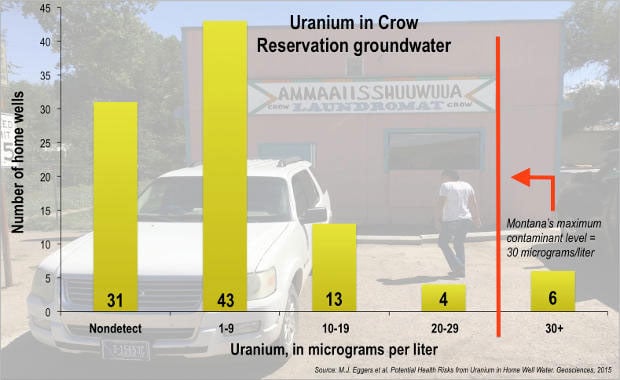
“You can’t smell it [uranium], you can’t taste it. It’s the last thing people need with diabetes,” Eggers says.
A U.S. Geological Survey database shows that, in 2009, 35 of 189 wells tested on the Crow Reservation had uranium at levels higher than federal drinking water standards allow. A 2015 follow-up study found that two-thirds of 97 private wells tested had detectable uranium, with six percent exceeding the limit considered safe.
For manganese, Eggers says between 11 percent and 17 percent of private wells on the reservation – and half of the reservation is on a private well – have higher levels than the EPA’s health advisory limit.
Manganese, too, is a major health concern, with the nervous system being the primary target of exposure, according to the U.S. Environmental Protection Agency’s (EPA) manganese drinking water advisory. The metal currently isn’t regulated in drinking water, however, scientists say it might hurt growing brains. There is some nascent evidence that manganese exposure is similar to lead, impacting the brain development of young exposed children, says Deborah Keil, an associate professor at Montana State University.
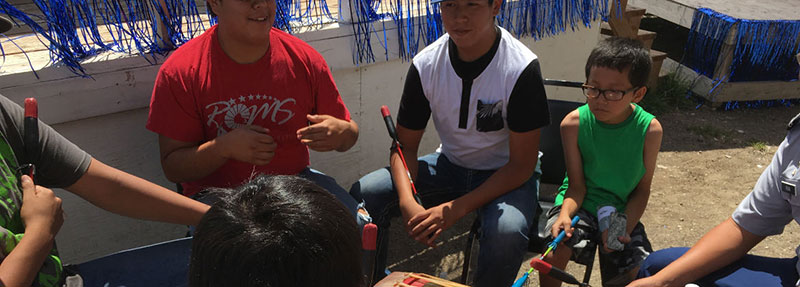
“Some [people] found out from testing they’ve been drinking contaminated water for a lifetime,” Eggers says. Eighty-five percent of wells tested exceeded the EPA’s limit for total dissolved solids — minerals, salts and metals.
“Untreated it eats up the plumbing, turns brown all your bathroom fixtures — your toilet, your sink,” says Robert Old Horn, a tribal member. “If you don’t have a water treatment system” — and many if not most tribal members don’t — “you can’t really do your laundry with it. It turns all your laundry brown.”
Then there’s the poop. The Little Bighorn and Bighorn rivers and many creeks crisscross the reservation. All tested are full of harmful, illness-causing bacteria, including Plenty Coups Spring in Pryor.
“You want zero for E. coli [concentration],” says Stephanie Ewing, an assistant professor of soil biogeochemistry at Montana State University, who studies bacteria in the reservation’s springs, rivers and groundwater. Any fecal coliform and “you’re concerned,” she adds.
Fecal coliform and E. coli suggest water tainted with feces from cattle or humans. Both cause severe illness.
When 57 buildings and residences across the reservation — a mix of municipal water and well water — were tested for various bacteria, 35 percent of the locations had mycobacterium species, and 21 percent had legionella species, Doyle and others reported last year in the Microbial Ecology journal.
Certain mycobacterium species can cause respiratory diseases and skin problems and legionella is responsible for Legionnaires disease, a type of pneumonia that can kill people if not treated properly with antibiotics.
Eggers and Doyle were so alarmed by the results they’ve been giving water coolers to households most in need.
Detective Work to Tease Out Environmental, Health Link
Reservation-wide health data is sparse — Keil is collecting information on people’s health to compare with their exposure to water contamination — but the numbers from Big Horn County already paint a dark picture. Sixty four percent of the county is on the reservation. Two-thirds of the population is Native American. And Native Americans in Big Horn County, on average, have a 20-year lower life expectancy than Montana’s white population.
Compared to Carbon County, an almost entirely white county bordering the reservation to the west, Big Horn County has twice as many people living in poverty. Obesity is rampant — plaguing 36 percent of Big Horn County adults, reflecting the fact that a quarter of Big Horn residents have limited access to healthy food.
The number reflect national inequities, where 28 percent of Native Americans live in poverty compared to a U.S. rate of 15 percent, and median household incomes for Native American families remain more than $15,000 less per year than the nation as a whole.
Doyle, Eggers, other members of the Crow Environmental Health Steering Committee and academic partners are currently doing detective work to see where the contamination is and how it may tie into reservation health: collecting samples in homes, rivers, creeks, springs; looking for seasonal patterns; trying to determine when and where the contamination is the worst. The best way to stop it is to understand it, they say.
Or is it? The immediate health need is to bypass the contamination and deliver clean water. That’s in the pipeline, but still years away. The environmental and cultural needs run deeper.
“I’m a lifelong user of the Little Bighorn River,” Doyle says. “The river is very important to me … it was just naïve of us thinking that someone would fix these problems.”
Media that fights fascism
Truthout is funded almost entirely by readers — that’s why we can speak truth to power and cut against the mainstream narrative. But independent journalists at Truthout face mounting political repression under Trump.
We rely on your support to survive McCarthyist censorship. Please make a tax-deductible one-time or monthly donation.